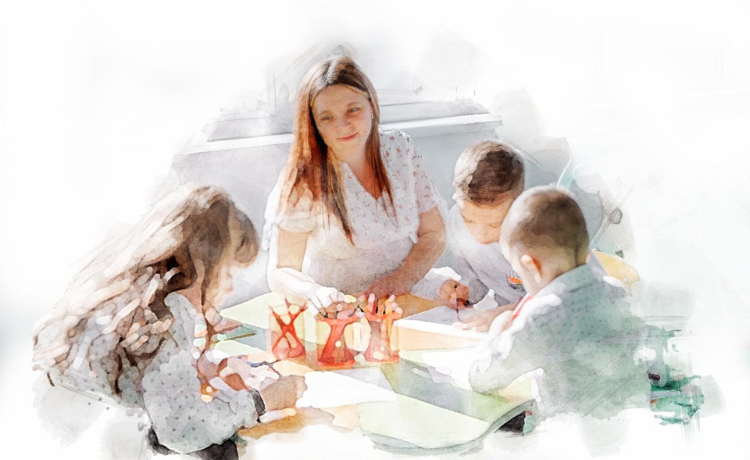News
The fertility fallacy: Five things you didn’t know about global fertility rates
- 10 June 2025
News
UNITED NATIONS, New York – “Do you want kids?” Every day, people around the world ask themselves, and others, this question. But it also begs another: “Do you feel able to have children?”
With over 8 billion people in the world, it’s a question that has become arguably more loaded. For some, this number is unsustainable, unequally distributed and will cause the planet’s demise. Others worry we’re in a “population collapse” – that societies cannot sustain their ageing, slowing demographics.
Yet amid all the anxiety, few are asking people what they actually want. This year’s State of World Population report, The real fertility crisis: The pursuit of reproductive agency in a changing world, asked these questions and more, revealing five little-known truths behind the headlines.
1. 1 in 5 people are not having the number of children they want.
As policymakers and pundits raise the alarm about fertility rates, they often assume that if people are having children, it’s because they can and want to, and if they’re not it’s because they can’t or don’t want to.
But in this year’s flagship report, UNFPA surveyed some 14,000 people across 14 countries, and found that around one in five said they won’t be able to have the number of children they would like. Most expect to have fewer, or none at all, while some say they will probably have more than they wish.

2. Most people want to have children – but too many are shut out of parenthood.
Most of the blame for ageing and slowing populations is levelled at women and young people. Around the world, headlines shame them for “opting out” of marriage and childbearing, or claim young people are “failing to launch”. Yet the survey shows that most people do want two or more children, but fear they can’t make this a reality. More than half said financial worries – including housing costs, childcare and job insecurity – would likely lead to them having fewer children.
Economic anxiety is also a major reason that national leaders are calling for more childbearing – they want higher fertility rates, in part, to ensure future workers can sustain their economies. How to reconcile the two? Recruiting more women into the paid labour force would actually be one of the most effective ways to address workforce shortages.
As it turns out, declining fertility rates and slowing economies share at least one driver: gender inequality. Lack of gender-equal and family-friendly workplaces is one the most significant reasons women don’t enter the workforce. It’s also behind people having fewer children than they would like, as women bear greater loads of childcare and domestic duties – a known contributor to lower fertility.
When women are not forced to choose between motherhood and their careers, they are more able to have the family sizes they desire. Anastasia Aslan in the Republic of Moldova explained, “When planning for [another] child, we considered whether we could support ourselves during my maternity leave and how to combine household tasks with work.” For her, flexible working conditions made the decision easier. “I hope more companies will encourage such policies, supporting mothers in planning their future and their families with confidence.”
3. Many people feel pressured to have children they don’t want or aren’t ready for.
The issue is not only people having fewer children than they want. Too many people are unable to prevent pregnancies they don’t want or aren’t ready for.
There are several ways this lack of reproductive choice plays out, all of them alarming: One in three respondents said they or their partner had experienced an unintended pregnancy. Nearly one in five said they had been pressured to have children when they didn’t want to. A quarter of men and one third of women said they had felt unable to say no to sex.

In Nigeria, where women have an average of five children, more than one in ten people reported expecting to have more than they wanted. Social pressures and lack of health services, especially family planning, are key factors. At the Kuje General Hospital in Abuja, healthcare provider Talatu Yakubu said these services are becoming more available across the country, but many women remain unreached, either because of a lack of clear information or because their partners forbid it.
“There are misconceptions. Some women believe that using a three-month injectable contraceptive will result in permanent infertility. Others say they are not supposed to start using family planning before they have had three or four children.”
Alongside accurate information and skilled healthcare, Ms. Yakuba was clear that men need to be part of the solution. “They need to start coming with their wives for counselling. Information is power, and what you know can be acted upon quickly.”
4. Most fertility policies don’t work – and some have the opposite effect.

Even in countries with stable or growing populations, policymakers are anxious about declining numbers. Many are trialling incentives like “baby bonuses” – lump sum cash payments when a baby is born – or short-term efforts to lower childcare or housing costs. Most of these are ineffective and offer scant support.
In the worst cases, some policies are actually rolling back hard-won gains in reproductive health and rights, such as restricting comprehensive sexuality education in schools, limiting access to contraception and criminalizing abortion. These kinds of measures can even be counterproductive: For example, abortion bans are linked to an increase in the number of unsafe abortions – which both drive up maternal mortality and contribute to secondary infertility.
In fact, history shows that efforts to steer fertility rates can and do lead to coercion and human rights violations, and that people will often take action to reassert their reproductive autonomy. Limiting choice and opportunity also risks making young people more pessimistic about the future – and less likely to have children. Research shows that policies that are perceived as undermining reproductive rights can make people less willing to have children.
Ultimately, trying to make people have more babies doesn't work. So what does?
5. People need security, equality – and hope.

One fact has become glaringly clear: Too few people have full reproductive agency.
Nearly one quarter of respondents had at some point wanted to have a child, but felt unable. Financial reasons were a major issue, but for many it was also health-related – including chronic illness, issues accessing health services, or infertility. Concerns about the future also weighed heavily: Some 20 per cent said that the state of the world – including wars, pandemics, politics and climate change – would likely lead to them having fewer children than they wanted.
Headlines sowing terror about “biological clocks” and “population collapse” are only reinforcing these fears. Instead, countries should be expanding reproductive choice, and supporting inclusive policies that empower and improve the welfare of all people.
That means improving access to reproductive health services for everyone, especially those currently left behind – disabled persons, ethnic minorities, migrants and more. It means supporting women who want to join, or stay in, the workforce without sacrificing the chance to become mothers. It means ending stigmas and workplace policies that discourage men from doing their share of childcare.
It can also mean expanding family support, including fertility and adoption services, to people who are too often excluded: those in the LGBTQIA+ community, single people, and women once considered “too old” to be suitable mothers. It also means respecting people who don’t want children at all – a valid, legitimate choice that should be equally protected from stigma and pressure.
And finally, people need hope. They need hope for their own futures, and hope for the futures of the children they want to have. For that, policymakers must listen to what people need.
“Vast numbers of people are unable to create the families they want,” said Dr. Natalia Kanem, UNFPA’s Executive Director. “The issue is lack of choice, not desire, with major consequences for individuals and societies. That is the real fertility crisis, and the answer lies in responding to what people say they need: paid family leave, affordable fertility care, and supportive partners.”